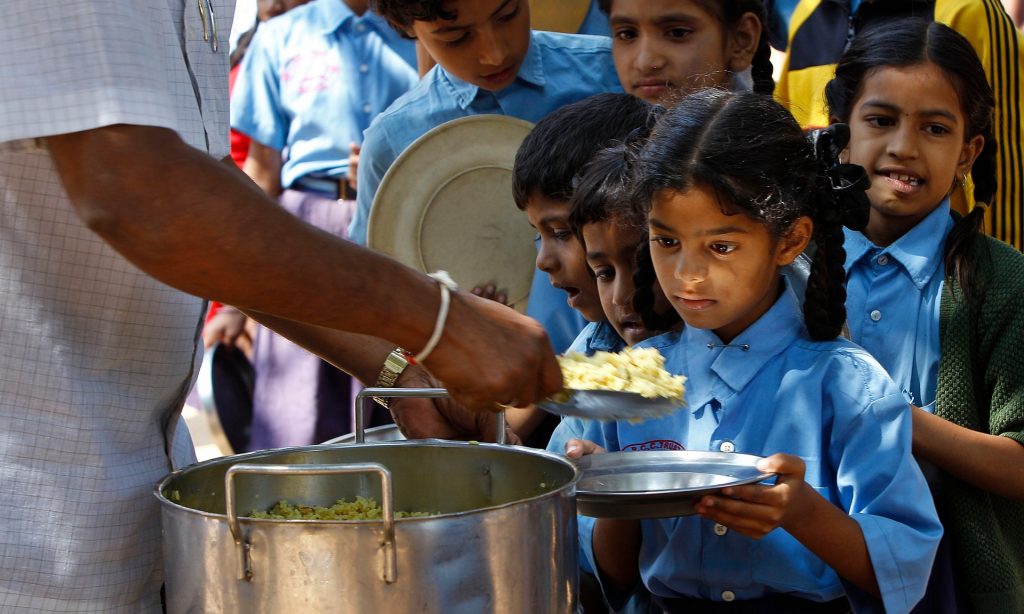To end malnutrition, we must step up to the plate with data on what people eat

This article was orginally published on the Guardian.
Food systems are increasingly recognised as the driving force behind malnutrition in all its forms. Healthy diets are as fundamental to resolving stunting and vitamin and mineral deficiencies as they are to preventing obesity and diet-related non-communicable diseases. And healthy diets are made possible through healthy food systems.
The 2014 international conference on nutrition – where the focus was “better nutrition, better lives” – and a plethora of recent reports are testament to this. However, attempts to modify or influence food systems in ways that are more supportive of good nutrition have been stymied by a lack of relevant data.
The world is short of good information on what healthy food systems look like and lacks the data policymakers need to make food systems more effective in reducing malnutrition.
Two initiatives that we are involved with – the annual global nutrition report (GNR) and the global panel on agriculture and food systems for nutrition – seek to address this problem by highlighting what works in improving nutrition, and pointing out where data is simply lacking. The call for a “data revolution” is not empty rhetoric; evidence-based decisions can only be made with credible proof. Not all data gaps need to be filled – just those that hinder choices about improving nutrition and those that are needed to hold decision-makers accountable.
The food system data gaps identified by the GNR and the global panel’s new metrics briefing paper are broadly similar. First how affordable or accessible are nutrient-rich foods? Second, what is the quality of diet and the diversity of consumption? Third, how healthy are food systems around the world?
The GNR focuses additionally on environmental sustainability, while the global panel highlights indicators that look at what consumers choose and what is available.
Among the many areas where new data is needed, two are top priorities. First, our global data on food consumption is surprisingly limited and poor. Not food supply, but actual consumption. A number of initiatives are under way to try to improve this but, while valuable, most are still trying to make the most of existing data.
Data collection must be expanded and improved to record what people in different places actually eat. Poor diets are now the number one risk factor for disease, according to the recent global burden of disease analysis published in the Lancet. Surely the world’s foremost risk factor should be measured and understood with greater precision and disaggregation? Good methodologies already exist for collecting food consumption data – from individual intake or using household food purchases. But there is a widely held perception that these approaches are too expensive.
We, the co-authors of this piece, have both been involved in conducting household surveys in developing countries – from our PhD days to our present work – and we are always puzzled by the assertion that “this is too hard to do”.
Surveys on income and employment are much more labyrinthine in construction and rely on a host of assumptions about unit prices, time spent looking for work and the opportunity cost of time. They are just as time-consuming as the collection of food consumption data, and arguably not as multi-purpose. Food consumption data can tell us much about hunger, nutrition and income, often at household level.
The second priority is good data on the “food environments” in which consumption choices are made. While food systems represent processes, actions and incentives along the chain from farm to fork, food environments reflect the context of the places where people get their food. Indicators are needed to describe and track the areas where policy actions need to be focused:
- What food options are consumers presented with?
- What shapes the options available?
- What affects the choices made, in the context of relative prices, income, personal preferences and societal norms?
- What are the health and nutrition consequences of those choices?
The collection of such data will not be cost-free, and its analysis and use will not be easy. But there is really no alternative. Food systems already fail the 795 million people who are hungry, the 2 billion who currently suffer micronutrient malnutrition, and the 1.9 billion who are overweight and obese.
Crucially, poor diets typically underpin these conditions. With roughly one in three people malnourished in one form or another, business as usual simply doesn’t compute. Do we just cross our fingers and hope that things will get better? Or do we shed new light into the darker recesses of the world’s policy agendas and take on the dual challenge of collecting the right kinds of data and pursuing policy choices that will make a difference? If food systems continue to evolve in an unmeasured and therefore unplanned way, future diets and nutrition problems are only going to worsen.
UN member states and agencies that support nutrition have a responsibility to ensure the ICN2 framework for action, and the sustainable development goals, are supported by a set of indicators that support specific, measurable, assignable, realistic and timebound targets for action. Food systems are complex and defy easy categorisation. Decision-makers need a dashboard of indicators to help shape food systems so that they can deliver nutrition to all people, not just the lucky two out of three.
Without the data, the world is flying blind. Current and future generations deserve more than wishful thinking about healthy food systems; they deserve purposeful investments aimed at good nutrition. Anything less is not compatible with sustainable development.
By Dr Lawrence Haddad, Chair of the Foresight Lead Expert Group and Patrick Webb, Policy and Evidence Adviser for the Global Panel.
Learn more about our latest Technical Brief on Metrics and Data
Download the Technical Brief: Improved metrics and data are needed for effective food system policies in the post-2015 era
